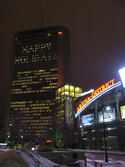In many ways, these are the best of times for rural America. Rising commodity prices for food, fiber and energy have revived the economy in much of the nation’s heartland. But still, many rural communities still are losing population, particularly among the young, and suffering unacceptably high rates of poverty. What accounts for this “best of times, worst of times” scenario? read more »
Demographics
The Dispersing of Urbanism
For more than a century, people have been moving by the millions to larger urban areas from smaller urban areas and rural areas. Within the last five years, the share of the world population living in rural areas has dropped below one-half for the first time. The migration to the larger urban areas has spread to lower income nations as the countryside seemingly empties into places like Chongqing, Jakarta and Delhi. read more »
Is China About to Decentralize?
More than a car, plane or train tick, the “Hukou” (the residential permit system) is the key to mobility in China.
I can still remember what my junior high English teacher said to my classmates and I, “I really worry about you guys; if you don’t study hard, not only will you not be able to get a job, you will probably have nowhere to stay, while the kids from the countryside; at least they will have some land to grow plants on and a house to live in!” (In my junior high school, all of my classmates had an urban hukou.) read more »
Fuzzy Thinking by Famous Economists
Edward L. Glaeser, in an end-of-year piece for the New York Times, claims that generous housing supply is the reason that Texas’s economy is performing so well. As he says in his final paragraph:
“Housing regulations, more than those that bind standard businesses, explain the Sun Belt’s population growth. If New York and Massachusetts want to stop losing Congressional seats, then they must revisit the rules that make it so difficult to build. High prices show that the demand would be there if the supply is unleashed.”
This can’t be true. read more »
The Heartland Rises
The change in congressional power this week is more than an ideological shift. It ushers in a revival in the political influence of the nation’s heartland, as well as the South.
This contrasts dramatically with the last Congress. Virtually its entire leadership — from former House Speaker Nancy Pelosi (D-Calif.) on down — represented either the urban core or affluent, close-in suburbs of large metropolitan areas. Powerful old lions like Reps. Charles Rangel (D-N.Y.) of Harlem, Henry Waxman (D-Calif.) of Los Angeles and Barney Frank (D-Mass.) of Newton, an affluent, close-in Boston suburb, roamed. The Senate was led by Sen. Harry Reid (D-Nev.), who loyally services Las Vegas casino interests while his lieutenant, Sen. Chuck Schumer (D-N.Y.), is now the top Democratic satrap of Wall Street. read more »
Yes, We Do Need to Build More Roads
Road are clearly out of fashion in urban planning circles. Conventional wisdom now decries roads in favor of public transit, walking or biking in developments designed to mimic traditional 19th century urbanism. Common refrains are “we can't build our way out of congestion” or “widening roads to cure congestion is like loosening your belt to cure obesity.” Also frequently noted is the vehicle miles traveled has – at least until recently – outpaced population growth. read more »
The Poverty Of Ambition: Why The West Is Losing To China And India - The New World Order
The last 10 years have been the worst for Western civilization since the 1930s. At the onset of the new millennium North America, Europe and Oceania stood at the cutting edge of the future, with new technologies and a lion’s share of the world’s GDP. At its end, most of these economies limped, while economic power – and all the influence it can buy politically – had shifted to China, India and other developing countries. read more »
Toronto: Three Cities in More than One Way
The issue of income disparity in Toronto has once again been brought into the public eye by a December 15th report by University of Toronto Professor David Hulchanski. The report, “The Three Cities Within Toronto,” points to a growing disparity in incomes between Downtown Toronto, the inner suburbs, and the outer suburbs of the city. The report demonstrates that between 1970 and 2005 the residents of the once prosperous outer suburbs have been losing ground compared to the now wealthy downtown core. The results for the inner suburbs have been mixed. read more »
Demography vs. Geography: Understanding the Political Future
Demography favors Democrats, as the influence of Latinos and millennials grows. Geography favors the GOP, as the fastest-growing states are solid red. A look at America’s political horizon.
In the crushing wave that flattened much of the Democratic Party last month, two left-leaning states survived not only intact but in some ways bluer than before. New York and California, long-time rivals for supremacy, may both have seen better days; but for Democrats, at least, the prospects there seem better than ever. read more »
Holiday Greetings from New Geography
Here’s to the end of our 31st month publishing NewGeography.com. It’s been another good year of steady growth. Thanks for reading, for the good natured arguments, and your submissions. We hope your holiday season is relaxing and safe (for me it’s a 350 mile drive across the frozen tundra.)
Here’s a look at of some of our most popular pieces over the past year. read more »
- Login to post comments






















